Vierville sur Mer, June 6, 6 AM. Woken by lots of boots walking close to the car I grabbed my camera and climbed over a strip of rocks down to the beach. The tide had dragged the sea very far out, and the sun just climbed over the horizon. Against the golden light a uniformed couple was visible, hugging against the chill that clung to the sand, and the memory of what happened here 75 years ago. I knew I had to reach them, through the pools of water. Passing a soldier with an American flag on the way I took his picture, the M6 shutter at 1/250 almost inaudible in the somber mood.
After reaching the still hugging couple they turned out to be german, to my surprise. In the distance Tanks and jeeps were roaring, the beach filled with soldiers now, from all over the world. Real American Rangers mixed with re-enactors honouring the memories of the 16th Infantry Regiment, U.S. 29th Infantry Division that stormed this part of Omaha Beach on D-Day.
In the plans for Operation Overlord this area was called Dog Green, and it turned out to the worst sector of Omaha Beach, with some of the fiercest fighting and high casualties. It was heavily fortified, with cannons and machine guns strafing over the sand because a street leads up straight from the beach into Vierville, and then on to the Route Nationale and into Normandy. The german defenders knew it was imperative to stop the allied forces on the beach, and only the redeployment of the remaining 2nd Rangers of C Company secured victory that day.
While Robert Capa, who landed with Easy Company a bit further down to the east, had abandoned Leica years before, using with his Contax II with Kodak Super-XX Film (and his Rolleiflex) I brought my M6 (and Tri-X at 400 ASA).
As the sun was up already I worked with comfortable short exposure times and ƒ-stops between ƒ5,6 and 8. After I got the M6 earlier this year, I reacquainted myself with the analog workflow and purchased two enlargers, a 1980s Focomat V35 with Multigrade module and a gritty cool LC1. After it was clear that Nadja and me (it was her idea to go analog in the first place) would travel to Normandy the decision was quick to bring only the Leica, and one lens.
Digitally I use a lot of Nikons and Fuji, but D-Day asked for something special. After reestablishing the analog workflow and the test run in Italy I wrote about here some weeks ago, I was confident to shoot the whole trip on Film with one lens. The M6 felt much more appropriate than any digital Rangefinder or SLR.
From Bob Capa’s trip to Omaha famously only 11 pictures remained, while I had the luxury to shoot four films and chose from them. The obvious difference to shooting digital is how you follow an image. You recognize a possible picture, you get closer, and you take your shot. But sometimes after you pressed the button, the really good image happens in front of you. You crank the camera and shoot again, being aware the moment is over and at the same time hoping it could repeat itself. You end up with two images that surround the perfect shot, but hey. With digital, you snap away, hoping to get the shot, and then checking on the display if it really ended up on the card.
Unperturbed by the idea of missed shots I let myself flow with the groups of reenacting soldiers in their perfect vintage uniforms. We stood at the waterline throwing flowers into the sea, listening to a lady from Kansas singing the Star Spangled Banner, while performing my own reenactment of Robert Capas most famous assignment.
On a technical Note, as mentioned, 400 ASA Tri-X developed in HC-100 Dilution B, printed with a Leitz Focomat V35 @Gradation 3 on Ilford Multigrade FB Warmtone 24×30 paper, developed in Harman Warmtone.
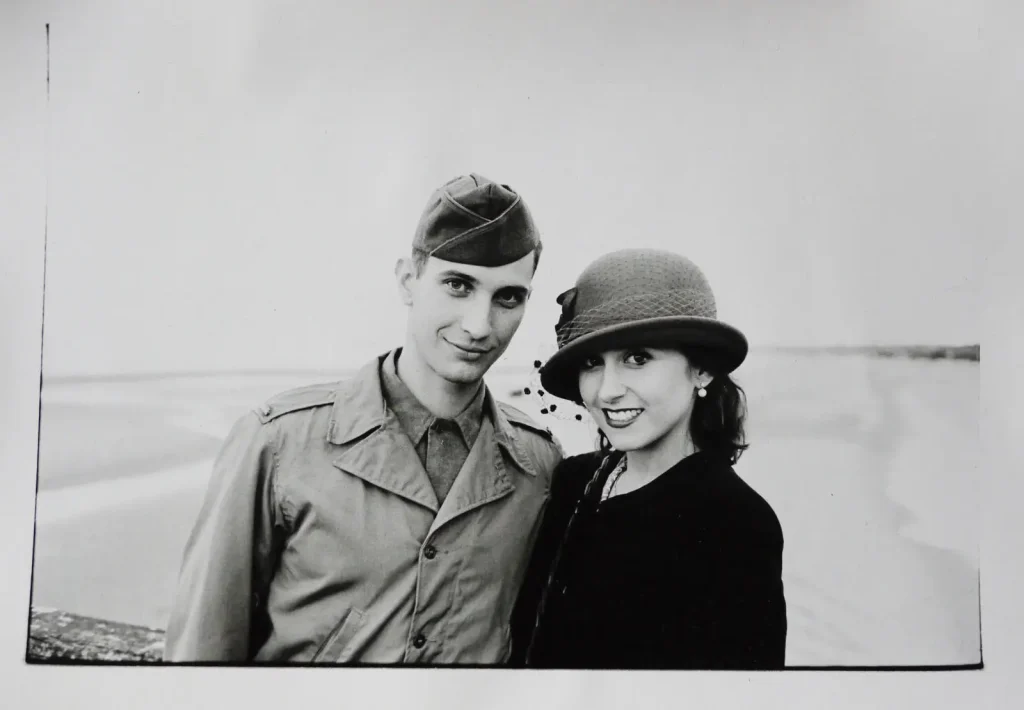
Charlotte and her boyfriend looked so 1944 that they could have arrived with the TARDIS. It was around sunset of June 5, and a piper started to play Highland Laddie on a pier on stilts. I got quite close and waited for the moment Charlotte turned around and laughed, with the piper in the background. Snap. Having just 5 frames I decided to show this later one, because it does their look more justice.
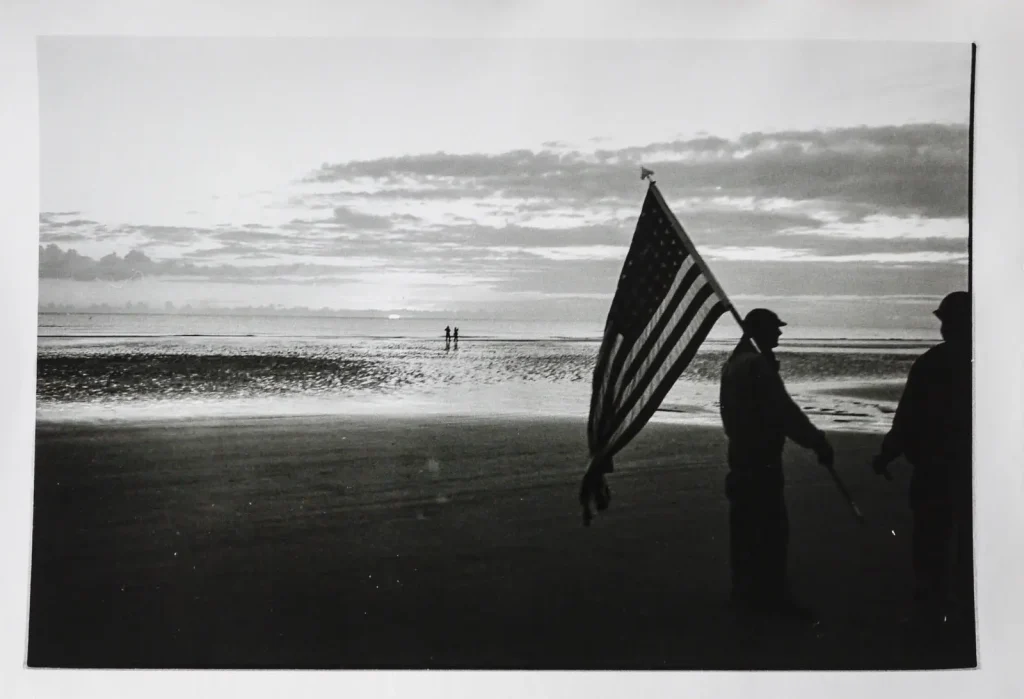
Sunrise on Omaha Beach on June 6, 2019. Dog Green was eery silent this rather beautiful morning, compared to the inferno 75 years ago.
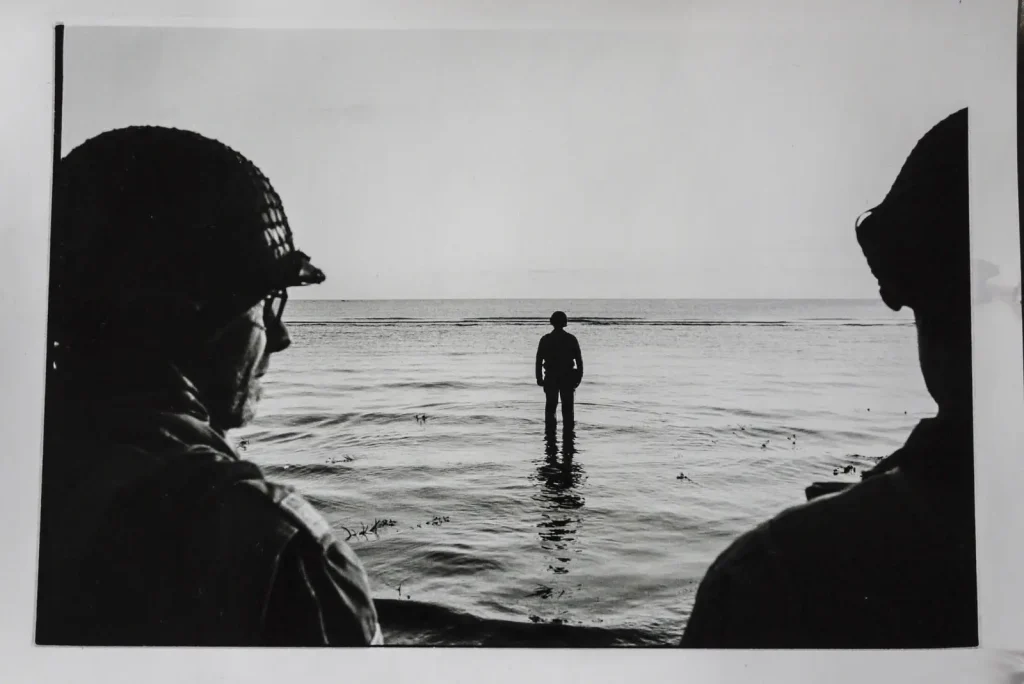
While people formed a long row on the waterline this trooper went out into the water. The Leica clicked almost silently without being disruptive.
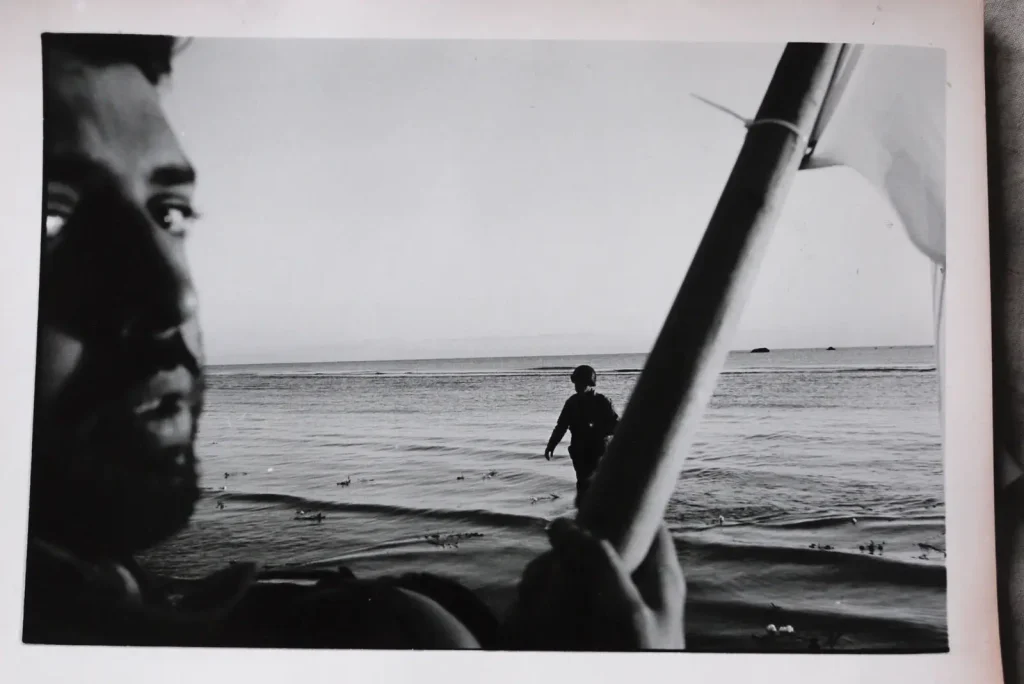
The 35mm lens on a Rangefinder allows you to get elegantly close to your persons of interest.
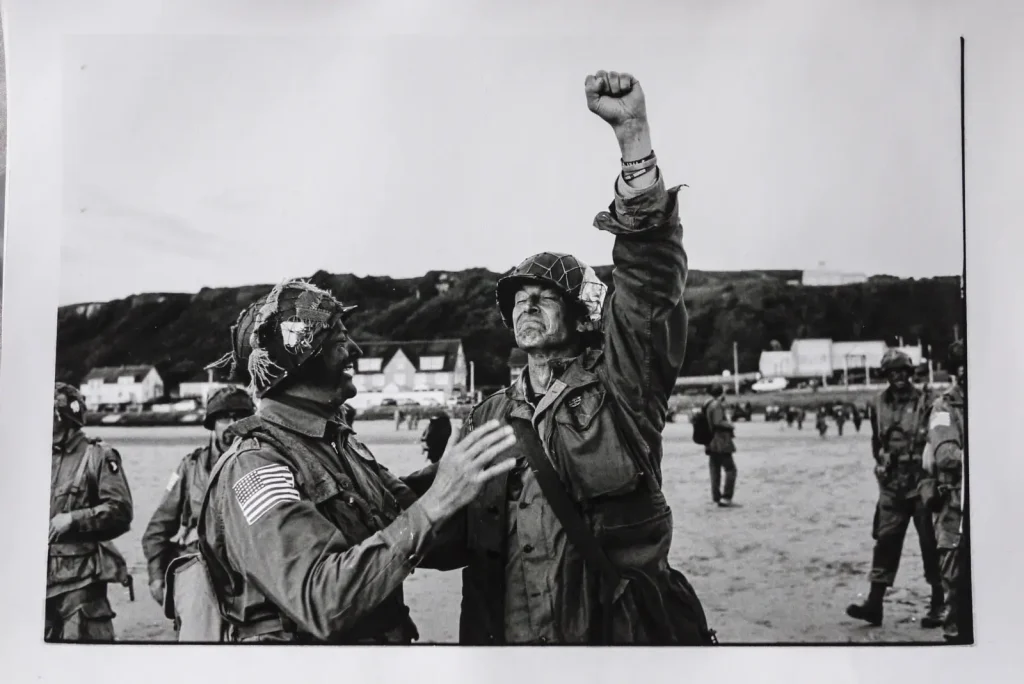
The M6 turned out to be the right tool to recapture a historic moment that shaped the outcome of the war, and the future of two continents.
Maybe I‘ll try the Contax next time. Thank you!
Share this post:
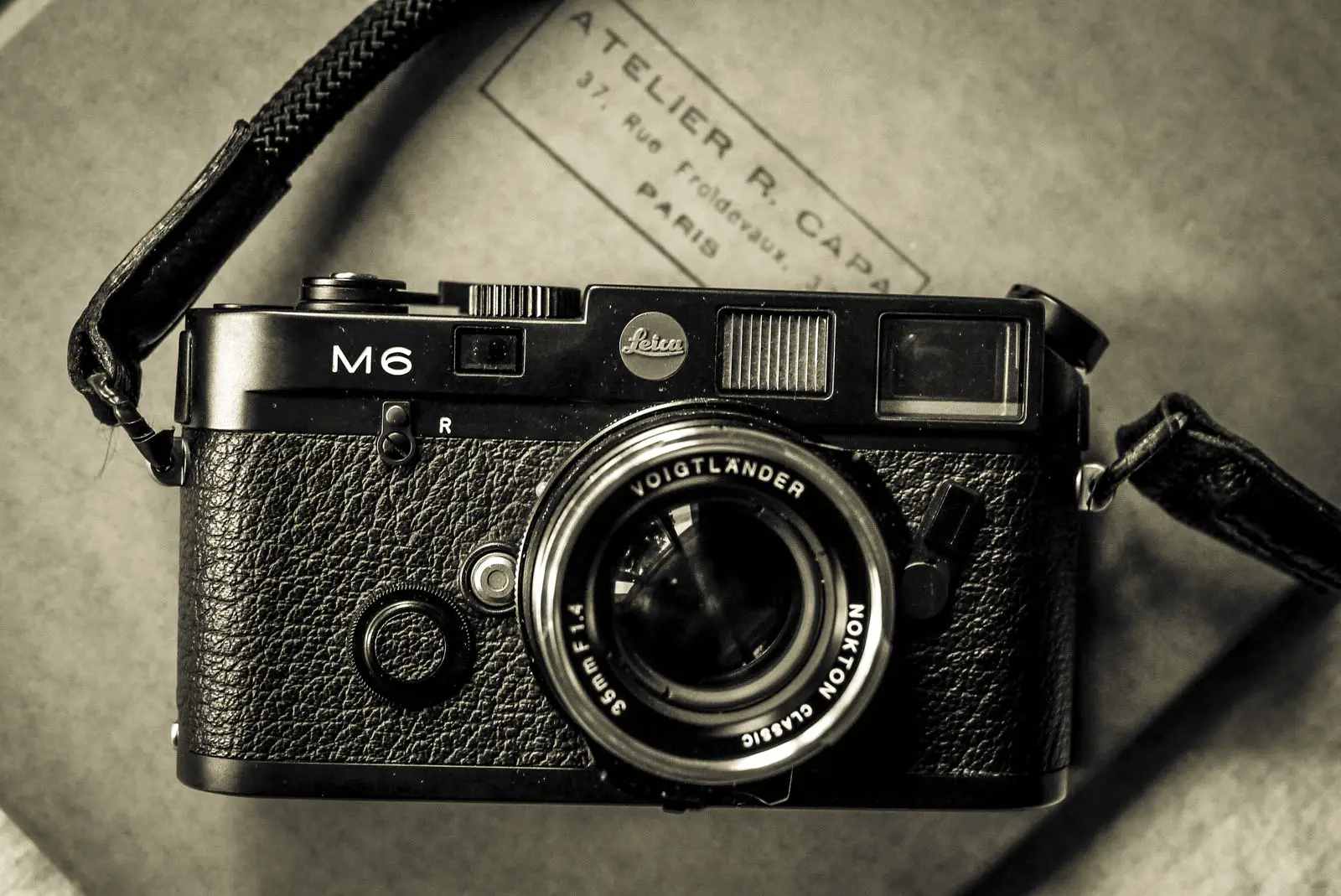








Comments
Steven Bleistein on 5 Frames from Dog Green, Omaha, and a Leica M6 – By Torsten Wulff
Comment posted: 20/08/2019
Comment posted: 20/08/2019
Comment posted: 20/08/2019
eric on 5 Frames from Dog Green, Omaha, and a Leica M6 – By Torsten Wulff
Comment posted: 21/08/2019
Leica Focomat : simply a gem !
Thanks very very much.
Tri-X and, a great M6, a great Voigt and with a great humble combo : great results, with art, and with a real story like last sharing from Hamish with his great M3.
Comment posted: 21/08/2019
Calum Davey on 5 Frames from Dog Green, Omaha, and a Leica M6 – By Torsten Wulff
Comment posted: 21/08/2019
Comment posted: 21/08/2019
Comment posted: 21/08/2019
Eric Manten on 5 Frames from Dog Green, Omaha, and a Leica M6 – By Torsten Wulff
Comment posted: 21/08/2019
No more to say!!!
Comment posted: 21/08/2019
Steve Karsten on 5 Frames from Dog Green, Omaha, and a Leica M6 – By Torsten Wulff
Comment posted: 26/08/2019
Comment posted: 26/08/2019